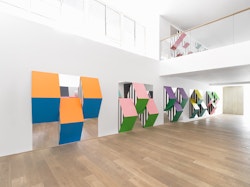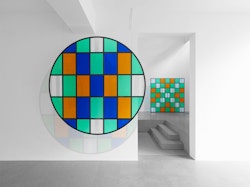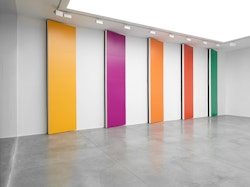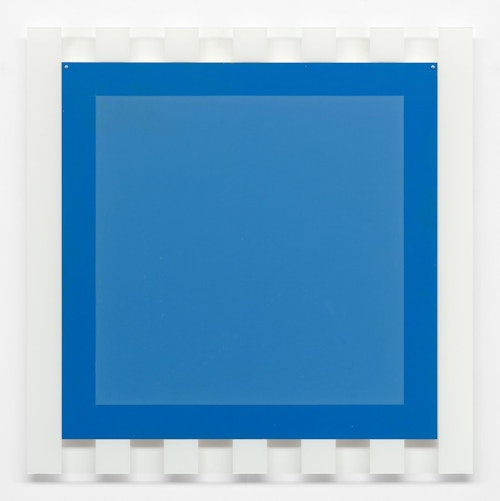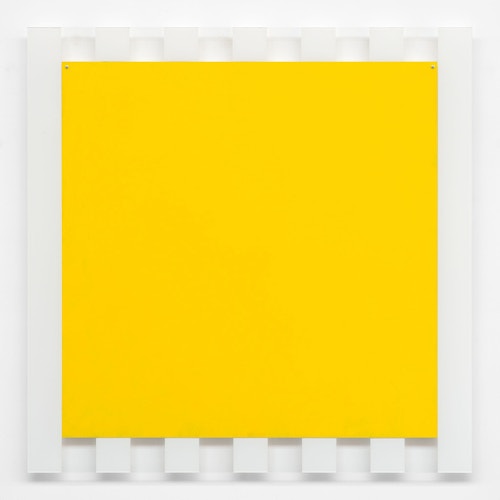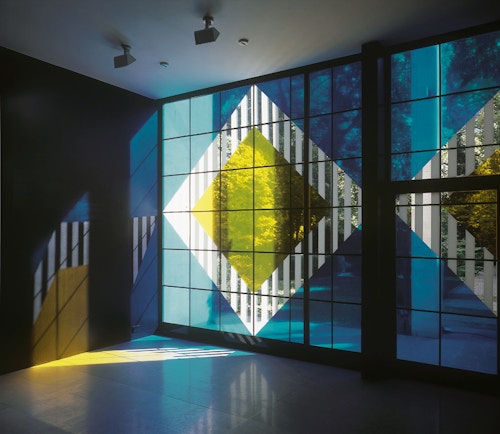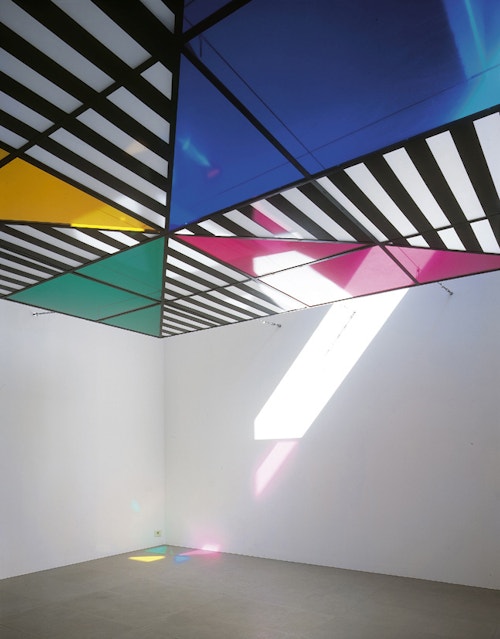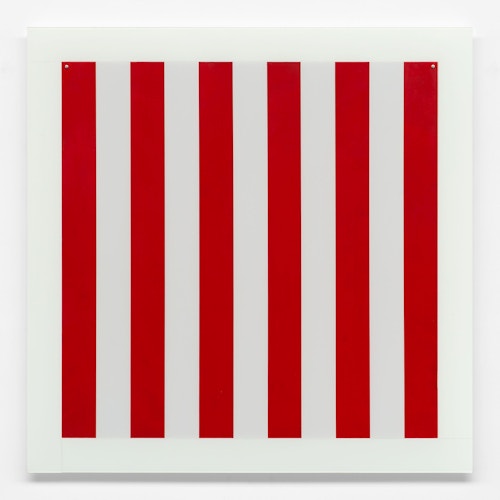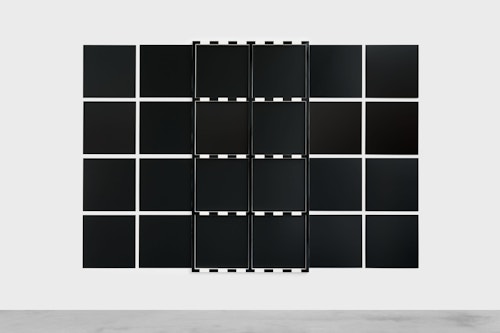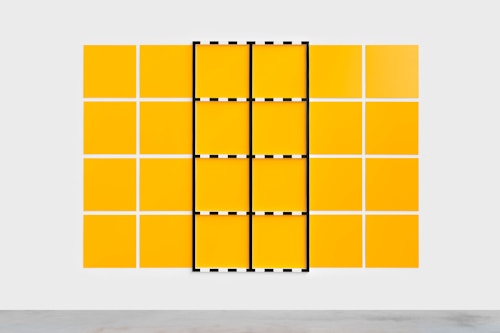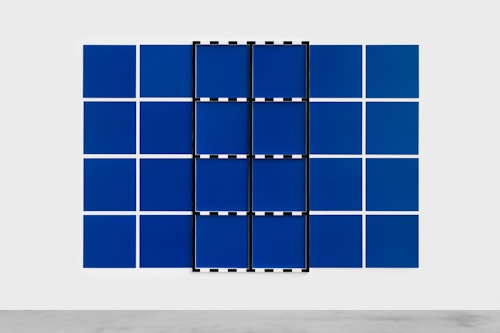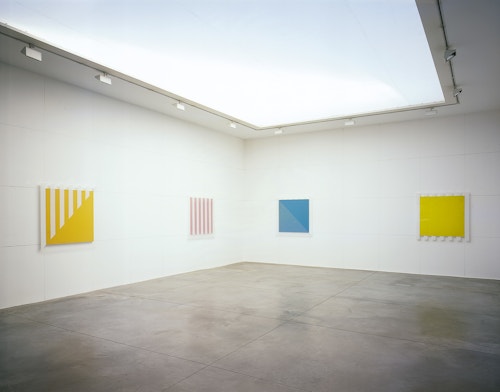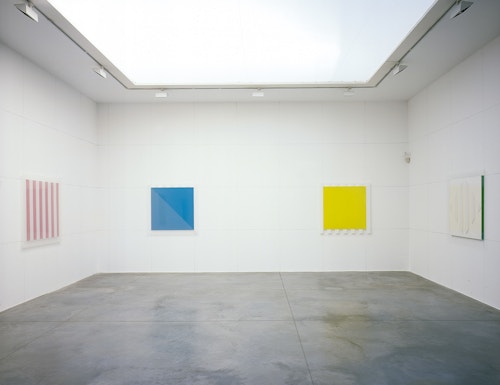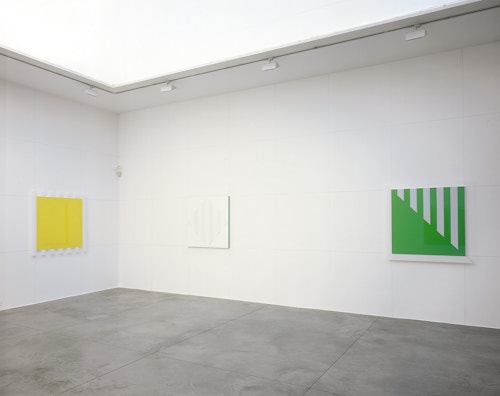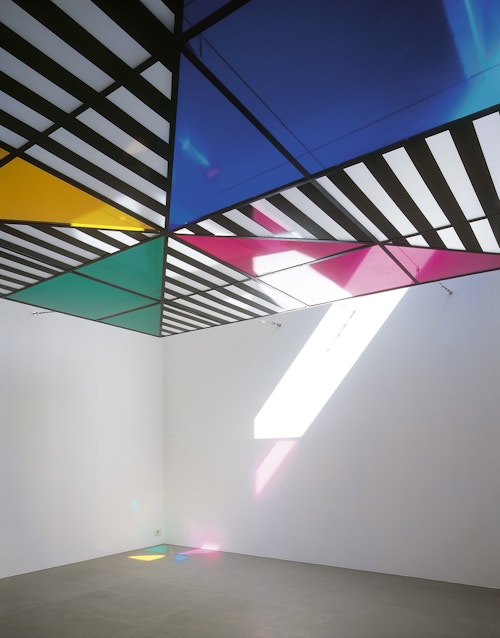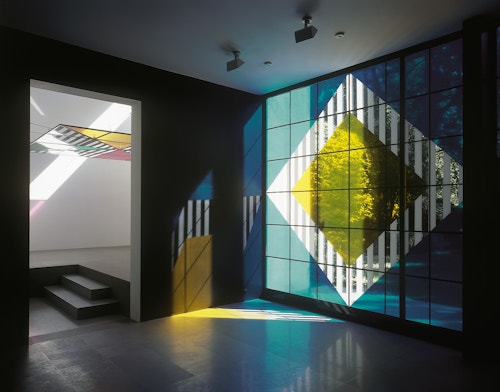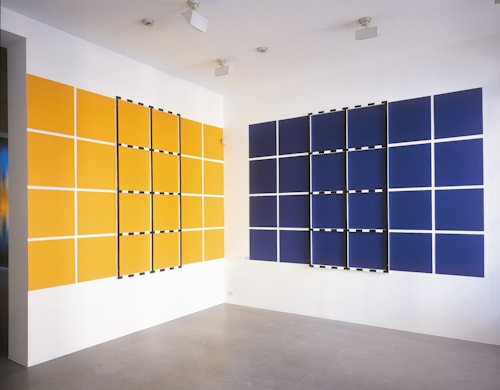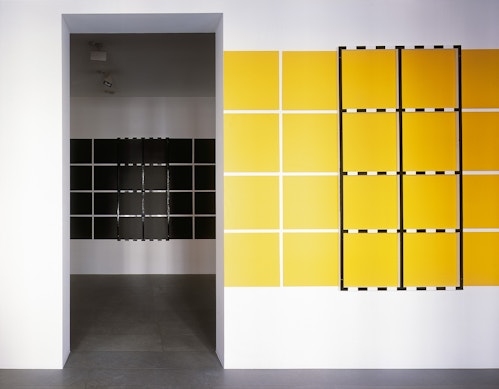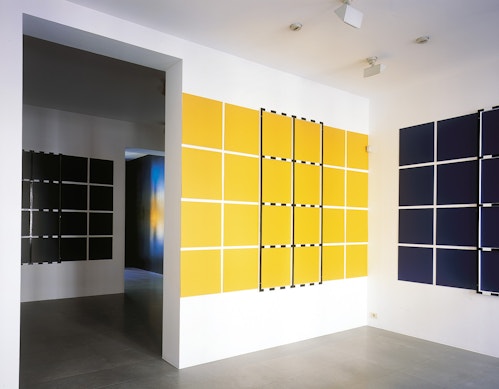
Daniel Buren Des reflets, des éclats et quelques autres choses aussi
Xavier Hufkens is pleased to announce the first exhibition by the French artist Daniel Buren at the gallery.
Throughout his career Daniel Buren has radically questioned the nature of art and the systems that support and manipulate it. At the same time, he has successfully worked within the institutions that are an integral part of this cultural machine. Born in Boulogne-Billancourt, outside Paris suburb, in 1938, Buren began painting in the early 1960s and after a short but prolific period of experimentation with this medium, the artist discovered the striped material that would become his signature. By 1965 the artist had begun making paintings with a linen pre-printed with alternating bands of white and colour that he found at the Marché Saint-Pierre, a textiles market in Montmartre, Paris. By reducing his paintings to their simplest visual and physical elements, emptying them of all illusion and subjectivity, Buren questioned the traditional expectations of the form, though he always applied acrylic to the outermost white stripes to differentiate the fabric from a found object. His interest in the literal components of the work, which consisted of both surface and support—the recto and verso—would lead him to explore aspects (both material and ideological) of a work of art that are not visible: what conventional painting, in fact, masks.

The repetitive stripes, 8.7 cm wide (the width of the bands on the original found fabric), became a ‘visual tool’ for Buren that he applied to various supports and with a large range of different materials. What has often been called a reduction, the artist has explained, “is in fact the widening of one’s field of vision” that Buren uses to draw attention to the relationship between art and its support or surroundings. At the end of 1967, Buren began pasting pre-printed posters with the vertical bands alongside or over advertisements and bills on supports throughout the urban landscape. This type of work, called Affichage Sauvage, challenged the usual art system and was often made without any invitation or support from a gallery. These works opened up Buren’s art to diverse audiences and interpretations and epitomize his interrogation of the museum and the conventional notion of the autonomous work of art…
While the stripes have remained a recognizable element throughout his oeuvre, Buren’s work has become more sculptural and architectural in scale and form. Materials associated with traditional painting, including the wooden stretcher and canvas, have morphed into freestanding walls, corridors, and rooms. Adopting these architectural elements into his own vocabulary, Buren began making work that both reflected and mimicked architecture. With his structures, which often merge with and alter the existing architecture, Buren creates ‘places within existing places’ and offers a different perspective on what might be a familiar environment.
(Excerpts from Susan Cross, Daniel Buren. Overview, Guggenheim Museum New York, 2005)

